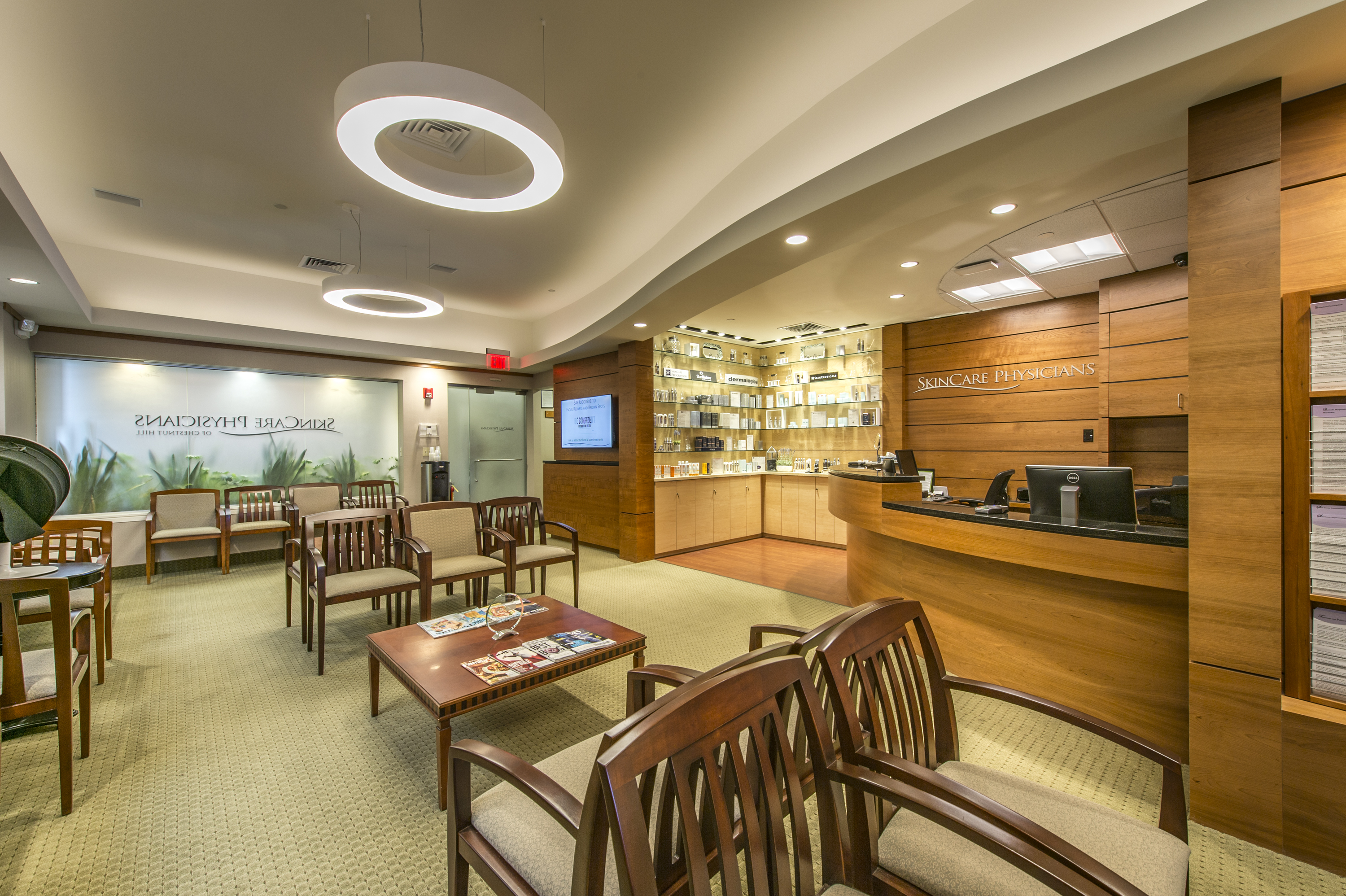- Home
- In the News
- Dr. Kaminer’s eHealth Radio interview on Cellfina for cellulite
Dr. Kaminer’s eHealth Radio interview on Cellfina for cellulite
Last week, Skincare Physicians’ Dr. Michael Kaminer was the guest of Eric Michaels on eHealth Radio and the Dermatology Channel. He discussed Cellfina, a treatment for cellulite, and answered the following:
- What is cellulite?

- How can cellulite be treated?
- Who is the ideal candidate for Cellfina?
- How does Cellfina work?
- Based on the patients treated, how long does it take to see results after the Cellfina treatment?
- How long will the Cellfina results last?
Listen to or read the interview:
Presenter: This is the eHealth Radio Network, your source for health advice on demand. And now your host, Eric Michaels.
EM: This is Eric Michaels, and once again you have tuned into the eHealth Radio Network and the Dermatology Channel. Don’t forget we’re also streaming on demand 24/7 on TuneIn Radio and the TuneIn Radio app for your listening convenience. Today we are speaking with Boston-based cosmetic surgeon Dr. Michael Kaminer, to talk on cellulite and how to treat it. Dr. Kaminer, a pleasure to have you with us today on the show.
MSK: Eric, thanks for having me.
EM: You’re welcome. So, for starters, tell our listening audience what is cellulite?
MSK: You know, it’s an interesting question, because I think our definition is changing. There’s probably two ways to define it. One is what do we all see when we look at cellulite, and I think everybody knows what it is. It’s sort of that rippled or bumpy or dimpled appearance that almost exclusively women have on the backside, and back of the thighs. But what’s been interesting is what we’ve learned about what’s going on underneath the skin, which is I think, redefining what causes cellulite, and therefore, in the end, how we treat it.
EM: And Dr. Kaminer how can cellulite be treated?
MSK: Well, for years, it’s been troubling, right? Women have been using all sorts of over-the-counter and topical and massage-based treatments. And those treatments have been stubborn. And I think women have been frustrated. Interesting data shows that most people can get about 10 to 20% improvement that’s temporary, and last about a month or two. And the reason why we believe that’s the case is previous treatments targeted the fat, which is what we thought was the cause of cellulite. And when we developed this new technology called Cellfina, what we decided to do was go at the other target that may be caused cellulite, which are what are called fiber septae or collagen bands that are underneath the skin. And we designed experiments that in the end proved that these little collagen bands, these fiber septae, they literally pull down the surface of the skin and create that dimpled appearance sort of like what would happen with a button and a mattress. And so by treating those fiber septae, rather than the fat, we are now able to treat the root cause of cellulite. And in addition, the other benefit is the results are very long lasting in terms of years.
EM: And who is the ideal candidate for Cellfina?
MSK: Typically, the patients that do best are on the younger side, so 20s to 30s with just a few either cellulite dimples on the backside, or little linear ridges or dimples on the outer or sides of the thighs. But which now we have learned that we can treat a lot more extensive assignment we can also treat women well into their 40s and 50s. So the sort of rule of thumb is if you have less than you have great skin tone, you’ll do spectacularly. But if your skin is you know maybe not doing as well as it used to be or you tend to have a little bit more cellulite, we can still treat those women effectively. And the data is really compelling 99% of the people that we treat with Cellfina will get a noticeable benefit. And the FDA has recently cleared this technology for at least three years. And in my personal experience. I think these results last even longer on the orders of five years or more.
EM: And that is certainly good news. Today we are joined by dermatologist Dr. Michael S. Kaminer MD, a known leader, innovator and talented skin cancer and cosmetic surgeon in the Boston area. He is also one of the three founding partners of SkinCare Physicians here on eHealth Radio’s Dermatology Channel, a part of the eHealth Radio Network. Now, Dr. Kaminer, taking it a little further, how does Cellfina actually work?
MSK: Well, when we made these little discoveries in the beginning, which turned out to be somewhat bigger than we thought, we found that these little collagen bands, these fiber septae that are under the skin and everybody has them. What’s interesting is women develop these basically, in utero, men do not. And these little fibers band as women go through puberty start to become more pronounced. And when they get sort of to their mature stage, late teens into the 20s, and 30s, they pull down on the surface of the skin. What Cellfina does, is use this tiny little tool that goes under the skin, after we put just a drop of local anesthesia in, and the tool when it gets under the skin enables to release that fiber band that’s pulling on the under surface of the skin, sort of like a rope pulling down under the skin. And this little tool simply releases the rope that allows the skin to float back up. And the result is a smooth appearance. So the procedure is relatively simple. And I think that’s one of the things that we know in medicine is if you can come up with something that’s a simple concept, in the end, patients will benefit pretty quickly and importantly with Cellfina, very predictably.
EM: Also, based on the patients that you have treated, how long does it take to see results after the Cellfina treatment?
MSK: You know, amazingly some of our patients say that they see results as soon as three or four days out from treatment that’s somewhat unusual. The average patient about three to four weeks out really starts to see that the cellulite has improved. And again, the statistics are somewhat staggering for a new technique. I get 99% of the women that we treat, will get a benefit. When I asked my patients on a 1 to 10 scale, what, what’s the quality of the benefit, 10 being the most you can hope for, the average patient says it’s about an 8 or 9, and that 8 or 9 usually comes by one to three months after the procedure. So again, 99% of people will benefit. The results are pretty compelling in terms of the quality of the result. And by three months, just about everybody seeing benefit, and interestingly, those results seem to get better over the course of a full year. And so our patients for the year out are even better than they were even a couple months out.
EM: Excellent. And how long will the Cellfina results last?
MSK: Yeah, that seems to be the next big question we’re going to answer. We know based on what the FDA has cleared that it lasts at least three years. So, the quality of the result that we get with Cellfina, the treatment of cellulite, maintains its level of improvement and the quality of improvement for at least three years. And again, is that 99% of patients will see a benefit. Interestingly, of those, 96% at three years still feel that they still have the same amount of result. Now I’ve been treating people in my practice for as long as seven years when we did the research, seven eight years. And we feel that these patients are still maintaining the results. So officially from the FDA three years, unofficially in practice probably six or seven, and it’s likely going to be longer. I think we just have to wait and see.
EM: Interesting information Dr. Kaminer and very informative and we really appreciate your covering cellulite and how to treat it. Where can our listeners find your practice online and how could they be in touch?
MSK: Well, there’s two ways I can appreciate you having me on: one is at my practice’s website, which is SkinCarePhysicians.net. And if people want to find out more about cellulite and Cellfina they can go to the company’s website, which is Cellfina.com.
EM: Easy enough. Well, Dr. Kaminer we certainly have appreciated you’re joining us here today on eHealth radio and have a great rest of your day.
MSK: Thanks Eric, you too.
EM: We have been speaking with dermatologist Dr. Michael S. Kaminer MD, a known leader innovator and talented skin cancer and cosmetic surgeon located in the Boston area. He is one of the three founding partners of SkinCare Physicians and the website of reference and for contact it’s Cellfina.com. And this has been alright Michael and you’ve been listening to eHealth Radio in the Dermatology Channel, a part of the eHealth Radio Network and we do thank you for listening. And until next time, enjoy.
Presenter: Thanks for tuning in to the eHealth Radio Network. For more information or to subscribe to this podcast, visit ehealthradionetwork.com


